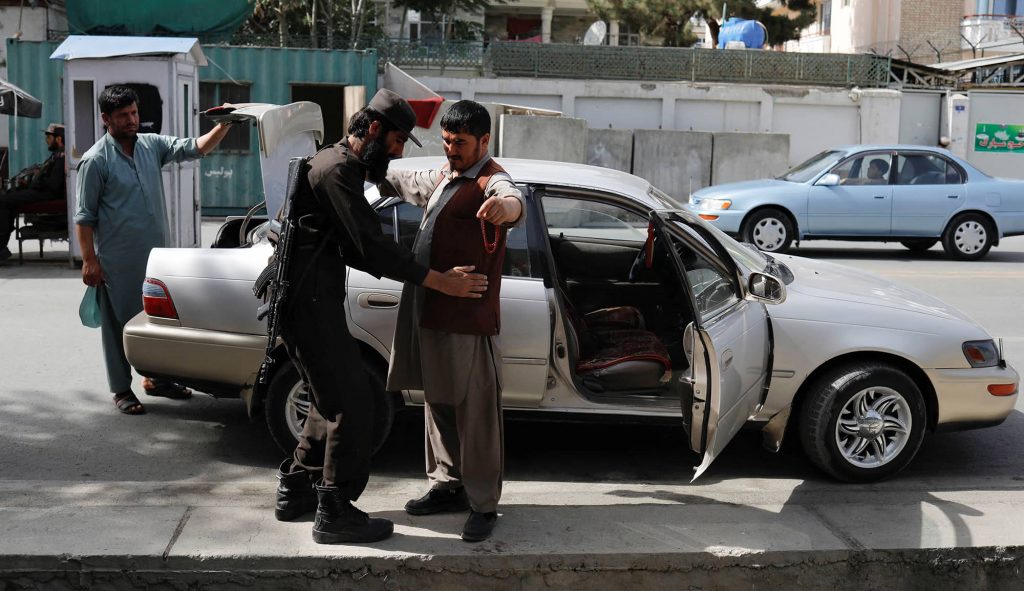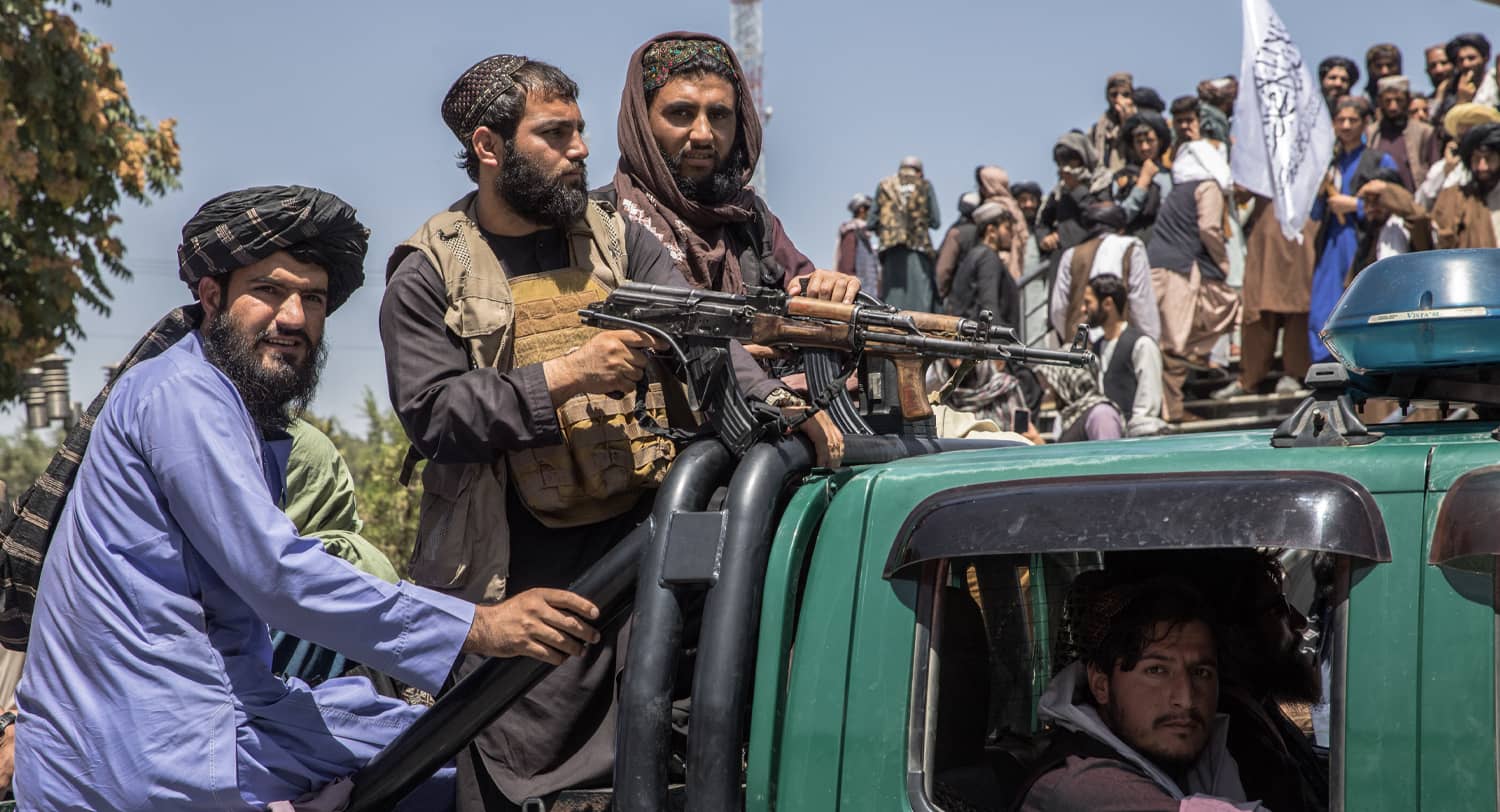The US withdrawal from Afghanistan and ensuing Taliban’s conquest have unleashed humanitarian, security, and geopolitical upheavals in the region. While the people of Afghanistan, particularly its women, bear the brunt of the unfolding catastrophe, the Taliban regime also has become a security “black hole” for its neighbours, especially its three northern ones (Turkmenistan, Uzbekistan, Tajikistan). An unstable Afghanistan also means blocking regional economic cooperation and integration and the return to the region of a “Great Game” type of competition by global powers.
Viewing this renewed tension in South-Central Asia in an historical context can help us to understand its most recent manifestation.
A True Crossroads of Civilizations
Prior to European colonisation and partition of the region into often incongruous entities, Afghanistan and its neighbours constituted the two broadly integrated regions of Transoxania and Khorasan.
The renowned American scholar Frederick Starr described these regions as a “Lost Enlightenment” because they were a crossroads of different cultures, religions and trade routes. They encompassed the Greco-Bactrian civilization, produced renowned Persian poets and Muslim jurists, and saw the rise of the cosmopolitan cities of Samarkand, Balkh, Bukhara and Herat. For instance, following Tsarist pogroms in the 19th century, some Jews in the Russian empire fled to Herat’s small but flourishing Jewish community, which symbolized an interconnected region and religious co-existence, in contrast with Europe’s persecution of Jews.
After the 19th century, Afghanistan became a “buffer state” between British India and the expanding Russian empire (hence Afghanistan’s eastern panhandle connecting it to China, so there was no common border between the two powers), heralding its tragic status as a battlefield for a series of proxy wars by external powers.
Two distinctive forces and associated geographies are visible in Afghanistan’s modern history: progressive forces of the North versus militant Islamist elements centred in the South, or in geopolitical terms, Eurasia versus the Indian Subcontinent. The British and Russian powers paved the way for the emergence of antagonistic forces, including religious nationalism and ethnic partition. The Deobandi Islamist movement originated in India in the late 19th century; its early anti-colonial mission later metastasized into an anti-modernity militant Islamist movement.
Furthermore, Pakistan’s creation as the first modern “Islamic state” ensured the dominant role of militant Islamic forces at the expense of other Islamic trends and movements. Most Afghan Islamic parties, particularly the Taliban, were heavily shaped by the Deobandi doctrines, disconnecting the region from the religious heritage of Khorasan, which can be described as “civilizational Islam” and characterised by rationalism, Sufism, and civic cultural elements.
Islamists’ Three Strikes Against Secular Modernizers
Since the early 20th century, the political forces that originated in the South/Subcontinent – along with their external patrons – toppled Afghanistan’s nascent constitutional order three times. First, Afghanistan’s modernizing King Amanullah (1919-1929) was deposed by the British Raj who supported the first successful Islamist/clerical uprising against King Amanullah’s reform agendas.
The second successful set of Islamists were Pakistan-based mujahedeen who toppled the Soviet-backed leftist – and thus secular – Afghan government (1978-1988). The Taliban followed these two precedents by capitalizing on the divisions within Afghan political elites and utilizing Pakistan’s strategic interests and West’s geopolitical priorities.
Western support of Afghan mujahideen during the Soviet intervention – and later Western benign treatment of the Taliban = including the initial refusal to put them on the proscribed terrorist groups – indicate a complex relationship between militant Islamist groups and Western powers. In other words, there have been alliances between Islamists’ illiberal agendas and the West’s geo-political interests.

Afghanistan as Greater Waziristan
The small tribal region of Pakistan called South Waziristan was once described by President Obama as “the world’s most dangerous place” owing to terrorism, illicit drugs, organized crime, and proxy warfare. Taliban-occupied Afghanistan is becoming “Greater Waziristan,” defined as the embodiment of Pakistan’s geopolitical victory in finally incorporating Afghanistan into its geostrategic sphere.
Pakistan’s concept of strategic depth – meant to give its forces the option of rallying under an assault with India by falling back into Afghanistan – is essentially an updated version of Britain’s “forward policy” during its colonial reign in South Asia.
For many Pakistani strategists, Afghanistan should be an extension of Pakistan’s tribal areas and thus they opposed Washington’s efforts to support a modern, constitutional order in Afghanistan. From Mahmud Ghaznavi in the 11th century to Pakistan’s first war against India in 1948, successive armies have recruited tribal militias as cheap but effective fighters for their imperial battles. Pakistan’s competition with India is framed by the Islamic term of the “Ghazwa–e-Hind”- a prophecy where an Islamic army invades and conquers the Indian Subcontinent. “Greater Waziristan” is essential to the preparation, launch and sustainment of this millennial struggle. Indian security officials have already raised alarms about an increase in the seizures of arms and ammunition in Kashmir coming from Afghanistan.
Taliban-occupied Afghanistan presents a spectrum of threats and abnormalities to its northern neighbours. As a predominantly Pashtun group, the Taliban’s ethnic composition is alien to Afghanistan’s northern ethnic communities who have mainly Turkic and Persian heritages. The Taliban have already started a gradual but systemic ethnic cleansing of non-Pashtun populations from the northern areas and replacing them with Pashtuns from the Pakistan-Afghanistan border areas. Among the newly settled population are members of Pakistan’s Taliban insurgency.
This resettlement is part of the Taliban strategy of “terrorism management” which includes cooperation, co-optation, containment, concealment and confrontation. Building on their own success story, and Iran’s and Pakistan’s effective use of terrorism as a foreign policy tool, the Taliban also have deployed suicide battalions alongside Afghanistan’s borders. Finally, illicit drugs are terrorism’s accompanying traveller. Despite Taliban claims that they are banning drug production, the northern drug route remains a well-run and established corridor to transport Afghan-produced illicit drugs to lucrative Central Asian and Russian markets.
The Taliban’s victory has reenergized militant Islamists worldwide, especially in their own neighborhood. Uzbekistan and Tajikistan have serious but suppressed Islamist militancy problems. The Afghan mujahedeen’s victory and then the Taliban’s success in defeating the two formidable superpowers of the Soviet Union and NATO respectively makes it easy for those militants to imagine toppling the secular governments of the Central Asian republics. There is more than enough manpower among more than twenty militant groups that operate in Afghanistan, as documented by the UN Security Council Monitoring Team.
Ecological terrorism is the latest weapon that the Taliban have deployed against Afghanistan’s western and northern neighbours. Transboundary water disputes existed between Afghanistan and its neighbors prior to the Taliban’s takeover. Consistent with their professional incompetence and belligerent nature, the Taliban have dramatically escalated water warfare with Afghanistan’s neighbours. In an unprecedented move, in August 2023 the three presidents of Turkmenistan, Uzbekistan and Tajikistan issued a joint statement expressing their grave concern about the Taliban’s construction of a large water canal alongside their respective borders with Afghanistan.
Under the Taliban there are two additional emerging trends: Islamization of Afghan society; and China’s growing encroachment into Afghanistan’s natural resources and political spheres. While the Taliban’s banning of women from attending secondary schools and universities has captured global attention, the massive expansion of madrasas and religious education across the country is less noted. The Taliban’s ministry of education has recently boasted of enrolling close to 1 million mullahs into religious madrassas, out of Afghanistan’s 35 million population. In Pakistan with a population of 230 million, there are 2.5 million madrassa students. In Turkey, the Islamic-leaning government of Tayyip Rejep Erdogan has not yet achieved its ambition to recruit 120,000 religious instructors.
Meanwhile, inclusion of Afghanistan into Beijing’s orbit will be the inevitable result of Washington’s defeat and Pakistan’s ascendency, because China will not allow unfettered insecurity and its geographical rivals in its backyard. Both Beijing and Islamabad have already started discussions to include Afghanistan into China Pakistan Economic Corridor (CPEC). China has also started collaboration with Taliban’s security and intelligence apparatus, including a plan to install advanced camera systems in every province of Afghanistan.

Slaying the Hydra
There have been three distinctive responses to the Taliban’s reconquest of Afghanistan: illusion, fear and resistance.
To justify their negotiations with the Taliban, US officials promoted the illusion of a “changed Taliban” or “Taliban 2.0.” CIA Director William Burn was the first senior Western official to visit Kabul just few days after the collapse of the Afghan government; CIA engagement has been motivated in part by seeking ways to work together against common foes. Massive lobbying efforts, including Qatar and Norway’s “peace diplomacy” in Western capitals, promoted this fake narrative, which was also adopted by some EU nations. Nevertheless, the Taliban’s own deeds have dismantled this narrative. The latest UN experts’ report has validated multiple warnings about Taliban’s unwillingness and incapacity to transition into civic, developmental and responsible stakeholders.
Fear of the Taliban’s backlash has driven many other countries’ policy choices. The Taliban resemble Hydra, the mythological Greek multi-headed dragon. Each power wants to control one head, while directing other heads towards their adversaries. There is now competition among key regional and global powers to court their favourite faction among Taliban’s multi-layered structure, including Pakistan’s ISI, China’s Ministry of State Security, and Iran’s Quds Force.
Resistance characterizes certain internal movements that defy both the Taliban and the advocates of engagement/appeasement. Women-led movements have been the frontline of resistance against what the UN and others describe as “gender apartheid” and crimes against humanity. The entire spectrum of Afghanistan’s political and civic forces, including many among formerly Taliban’s apologists such as Hamid Karzai, have opposed the Taliban’s return to power. There are also pockets of armed resistance across the country. Regionally, the President of Tajikistan has been the most vocal opponent of the Taliban. In many other countries, the appeasers are losing their grip both over policy and public narrative, symbolized by on-going battles between the US State Department and the Congress over Afghanistan.
The outcome of this Herculean struggle may determine not only the future of Afghanistan, but also broader regional stability and global security. Can the region’s “Lost Enlightenment” and cosmopolitan nature be revived, or will “Greater Waziristan” prevail?



